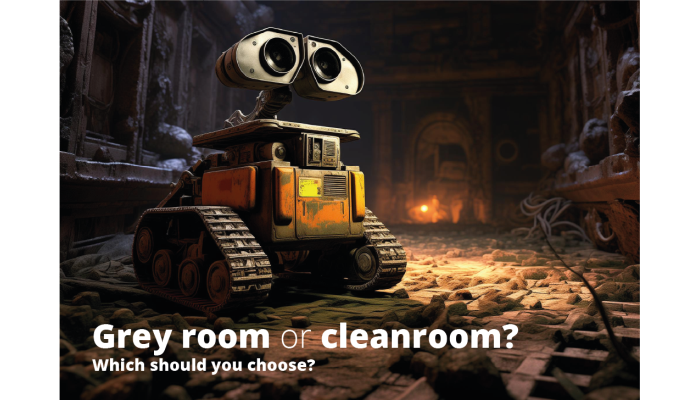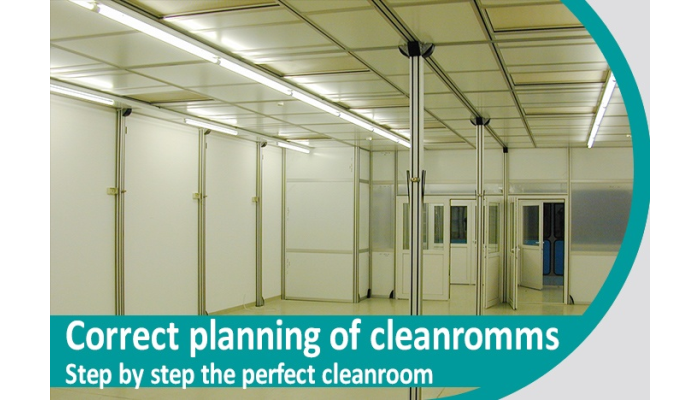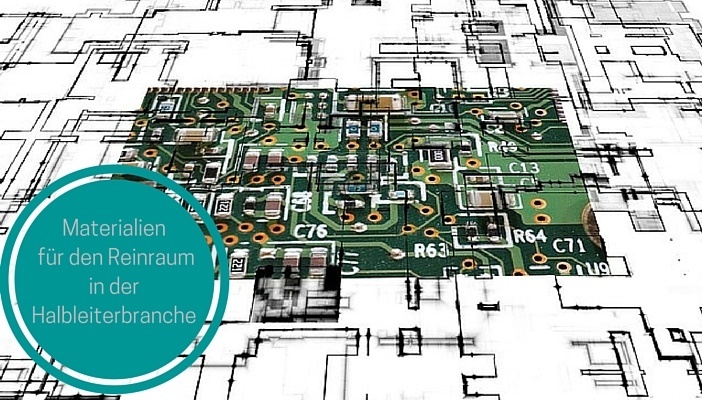Grey room or rather cleanroom?
For some years, the term ‘grey room’ has been used in customer discussions and specialist articles. But how exactly is a ‘grey room’ defined? And how...
3 min read
Joachim Ludwig 19.3.2025
The design and planning of a cleanroom depends first and foremost on the requirements placed on it. In some cases, a cleanroom is sufficient, but particularly in the technology, research and pharmaceutical sectors, as well as in the food industry, strict guidelines apply.

Nevertheless, the decision on the type and classification of a cleanroom should be preceded by consideration of whether a cleanroom is also the solution itself for the process under consideration. Each clean solution has advantages and disadvantages, which must be evaluated and then a decision made on whether a cleanroom or another cleanroom solution, e.g. a workbench solution or minienvironments, better fulfils the requirements. If, as a result of these considerations, a cleanroom is seen as the solution despite high investment and running costs, then the cleanroom or cleanroom cabin solution suitable for the processes should be considered.
In technical applications, the standard is the particle concentration in the cleanroom. The classification of the particle concentration in the air is described in DIN ISO 14644-1, the classes range from ISO 1 to ISO 9, with ISO 1 being the best class with the fewest particles. In life science applications, microbiological requirements must also be considered.
You can find out more about the connections and differences between the guidelines here.
The demands placed on a cleanroom are therefore extremely varied. It is therefore imperative that a wide variety of models and concepts are used in practice. There is no detailed differentiation between a cleanroom and a cleanroom cabin, nor is it absolutely necessary. Ultimately, it is only the designation that matters, which is often reflected in the size of the respective solution. Cleanrooms are often permanently installed systems, but can also be modular in design so that there is no fixed connection to the surrounding building.
There are basically two established systems:
In general, both variants are referred to as cleanrooms or cleanroom cabins. Depending on the application, these may only cover a few square metres, but can also fill entire halls. In most cases, room-in-room solutions are appropriate.
Which solution is best for your application is not just a question of price. In many cases, the differences between a hardwall and a softwall solution are only marginal.
You should therefore focus on the requirements of your use case. In general, almost all applications can be realised with both approaches, but in practice the strengths and weaknesses of the solution used quickly become apparent.
Softwall solutions are often ideal, especially when space is limited. Working in the tent-like cleanroom is not hindered by rigid walls. In many cases, foil solutions can also create faster access options.
However, the higher the air supply inside the cleanroom, the greater the risk of the foils curving outwards or sticking out. In practice, half-height foils that guarantee a constant air flow rate have proven their worth.
The basic requirement for the efficiency of the softwall solution is regular cleaning of the foils. This also poses a certain challenge for staff, as foils are generally more demanding to clean than solid walls, as they avoid the wipe due to their flexibility.
Foils also tend to outgas. You should therefore consider whether a hard roll solution would be suitable for your specific application.
Aluminium profile systems or panel systems can be used for the frame construction.
A wide variety of materials are available for the wall elements, from plastic to aluminium panels. Each material has its advantages and disadvantages, which should be taken into account when planning:
PVC-surfaces: Easy to clean, but not necessarily scratch-resistant. The cheapest solution. Some applications raise questions about fire protection with regard to smoke formation in the event of fire.
Polycarbonate: Sometimes very soft, usually more durable than PMMA. Not always scratch-resistant. Also available transparent.
PMMA: For transparent surfaces.
Sheet steel: High stability, risk of corrosion without paint. Best powder-coated.
Stainless steel: Very stable. The surface should be smooth (brushed or polished).
Aluminium sheets: Light and stable. The surface should be anodised and/or powder-coated.
Glass: Generally the most favourable solution. In practice, single-pane safety glass and laminated safety glass are used and guarantee a high level of shatter protection.
Planning is subject to many different factors, and the mostly modular structure is just one of the challenges.
Which wall solution is best for your cleanroom or cleanroom cabin depends primarily on the level of air purity you are aiming for. The higher the requirements, the more likely a hardwall solution is recommended.
We will be happy to advise you and help you with the customised implementation of your requirements.

For some years, the term ‘grey room’ has been used in customer discussions and specialist articles. But how exactly is a ‘grey room’ defined? And how...

Planning a cleanroom is always an individual and complex process in which all planned applications and local conditions must be taken into account....

The semiconductor industry in particular relies on a clean production environment. This applies not only to particulate contamination but also to...